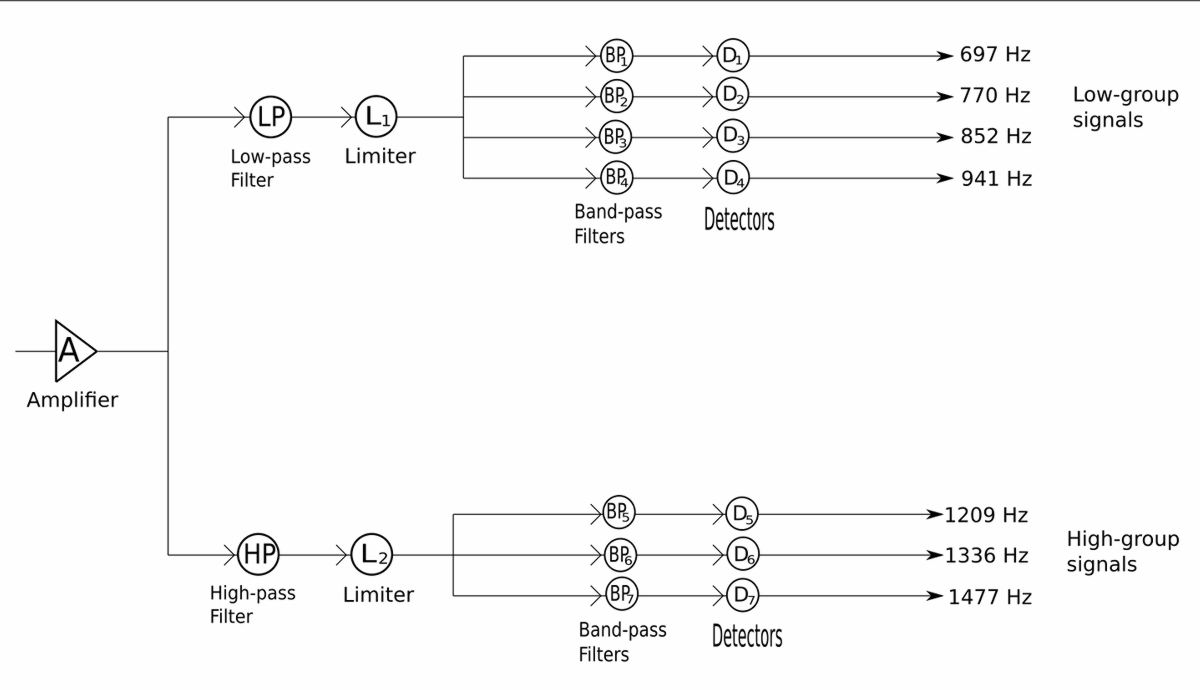Filters are also used in a typical 12-button keypad found in many touch-tone telephones. This keypad arrangement allows for 12 distinct signals using seven tones split into two groups.
- low-frequency group (697-941 Hz)
- high-frequency group (1209-1477 Hz)
This keypad arrangement is depicted below:
12 button keypad for touch-tone phones

When an individual button is pressed, two separate sinusoidal signals are added together.
For example, pressing number 7 generates tones with frequencies of 852 Hz. and 1209 Hz. When a phone number is dialed, the touch-tone signals are sent to the telephone office where they are decoded by detecting the frequencies.
Block diagram of detection scheme (figure 1):

From the block diagram we can see that the signals are separated into two groups by the high/low-pass filters. The limiters are then used to convert the sinusoids into square-waves. From there, individual tones are identified via 7 band-pass filters. Each of the band-pass filters passes a single tone while rejecting the others. The detectors are energized when the input voltage exceeds a certain threshold value. These detectors output DC signals which are utilized by the phone companies switching system. This connects the calls to the desired party.
In the next page we will look at an example problem involving a touch-tone phone system.
Continue on to touch-tone phone example problem ...
